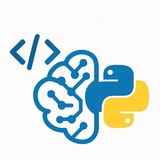import pandas as pd
df = pd.DataFrame({'Team': ['A', 'B', 'A', 'B', 'A']})
print(df.groupby('Team').size())
Team
A 3
B 2
dtype: int64
#49.
groupby.count()Computes the count of non-NA cells for each group.
import pandas as pd
import numpy as np
df = pd.DataFrame({'Team': ['A', 'B', 'A'], 'Score': [1, np.nan, 3]})
print(df.groupby('Team').count())
Score
Team
A 2
B 0
#50.
groupby.mean()Computes the mean of group values.
import pandas as pd
df = pd.DataFrame({'Team': ['A', 'B', 'A', 'B'], 'Points': [10, 8, 12, 6]})
print(df.groupby('Team').mean())
Points
Team
A 11
B 7
#51.
groupby.sum()Computes the sum of group values.
import pandas as pd
df = pd.DataFrame({'Team': ['A', 'B', 'A', 'B'], 'Points': [10, 8, 12, 6]})
print(df.groupby('Team').sum())
Points
Team
A 22
B 14
#52.
groupby.min()Computes the minimum of group values.
import pandas as pd
df = pd.DataFrame({'Team': ['A', 'B', 'A', 'B'], 'Points': [10, 8, 12, 6]})
print(df.groupby('Team').min())
Points
Team
A 10
B 6
#53.
groupby.max()Computes the maximum of group values.
import pandas as pd
df = pd.DataFrame({'Team': ['A', 'B', 'A', 'B'], 'Points': [10, 8, 12, 6]})
print(df.groupby('Team').max())
Points
Team
A 12
B 8
#54.
df.pivot_table()Creates a spreadsheet-style pivot table as a DataFrame.
import pandas as pd
df = pd.DataFrame({'A': ['foo', 'foo', 'bar'], 'B': ['one', 'two', 'one'], 'C': [1, 2, 3]})
pivot = df.pivot_table(values='C', index='A', columns='B')
print(pivot)
B one two
A
bar 3.0 NaN
foo 1.0 2.0
#55.
pd.crosstab()Computes a cross-tabulation of two (or more) factors.
import pandas as pd
df = pd.DataFrame({'A': ['foo', 'foo', 'bar'], 'B': ['one', 'two', 'one']})
crosstab = pd.crosstab(df.A, df.B)
print(crosstab)
B one two
A
bar 1 0
foo 1 1
---
#DataAnalysis #Pandas #Merging #Joining
Part 5: Pandas - Merging & Concatenating
#56.
pd.merge()Merges DataFrame or named Series objects with a database-style join.
import pandas as pd
df1 = pd.DataFrame({'key': ['A', 'B'], 'val1': [1, 2]})
df2 = pd.DataFrame({'key': ['A', 'B'], 'val2': [3, 4]})
merged = pd.merge(df1, df2, on='key')
print(merged)
key val1 val2
0 A 1 3
1 B 2 4
#57.
pd.concat()Concatenates pandas objects along a particular axis.
import pandas as pd
df1 = pd.DataFrame({'A': [1, 2]})
df2 = pd.DataFrame({'A': [3, 4]})
concatenated = pd.concat([df1, df2])
print(concatenated)
A
0 1
1 2
0 3
1 4
#58.
df.join()Joins columns with other DataFrame(s) on index or on a key column.
❤1
